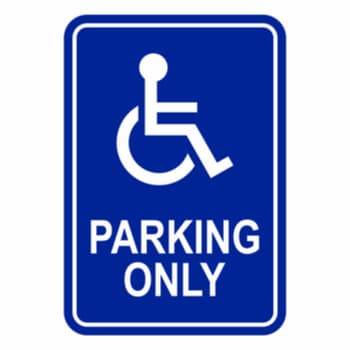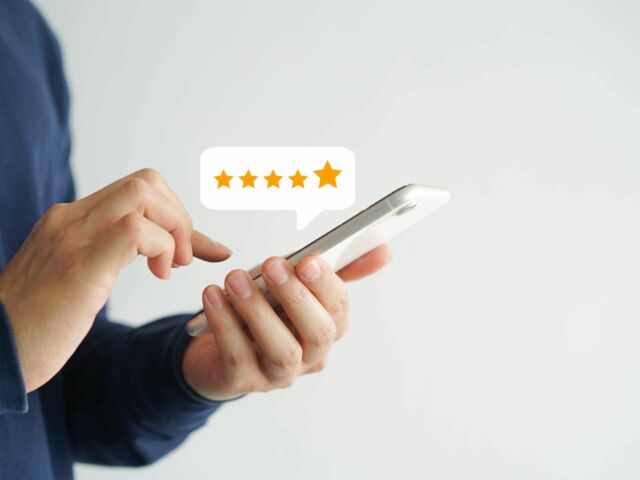Think it’s enough these days to take one of your waiting room brochures, put it on a computer and call it a website? Think again. Modern patients demand certain functionalities from their doctors’ websites, and in some cases the law even stipulates what you can and can’t have on your site.
 One of these aspects is accessibility. We’re not talking about your site being easily found on Google or being easy to use. In web design and development terms, “accessibility” refers to the site being accessible to people with disabilities.
One of these aspects is accessibility. We’re not talking about your site being easily found on Google or being easy to use. In web design and development terms, “accessibility” refers to the site being accessible to people with disabilities.
Accessibility is a virtual handicapped parking space or wheelchair ramp for your website. You want to serve all your patients, not just the ones who can read, see or hear without issue. That’s why you need to be deliberate when setting up your website to ensure it is accessible to all.
What Does Accessibility Mean to Healthcare Sites?
According to the World Health Organisation (WHO), about 15 percent of people in the world live with a disability. In the U.S., that was 57 million people in 2010, says the U.S. Census Bureau. That’s a lot of people who might need your expertise. You don’t want to put up more barriers for them to get access to quality healthcare than they already have.
Those with disabilities may not be able to see a screen well or at all, may have trouble using a computer mouse, may have dyslexia or have trouble reading, and a host of other potential challenges. People who have disabilities that may affect how they use your website can include those who are:
- Blind
- Colorblind
- Cognitively impaired
- Deaf
- Dyslexic
- Epileptic
- Movement-restricted
Does that sound like some of your patient base? People with such limitations may need access to exactly the kind of healthcare you provide. You don’t want to turn them away due to a website that doesn’t take their needs into account.
What’s more, a fully accessible website can benefit from people who don’t have disabilities but may have temporary limitations. A background and text color that makes content easy to read for people with low vision, for example, will also help someone navigating your website on a phone in bright sunlight. Closed captions for people with a hearing limitation will also help someone watching your video in a noisy environment.
How People With Disabilities Navigate the Web
Different disabilities will require different adaptations, but some of the more common tools for people with disabilities include:
- Screen and text readers
- Screen magnifying software
- Talk-to-type software
- Eye- or motion-tracking input devices
- Head pointer input devices
- Single-switch entry devices with on-screen keyboards

Web Accessibility Standards
To have an accessible website, you’ll need:
- Alt text on your images—Alt text tells screen readers what the image is about. It is also an important tool for search engine optimization.
- Headings and subheadings—Headings and subheadings are HTML elements that give structure to your page. Some accessibility tools use headings to navigate through a page instead of input tools like a mouse.
- Captions—Captions for video and audio allow nonhearing users to still obtain all the information from auditory media.
- Forms—Any patient forms should have clear labels for their dropdown boxes or fields
- Links—Hyperlinks in your website’s content should have clear anchor text giving the user a clue as to what the link will contain
SEO Considerations
Some of what makes for good accessibility also makes for good SEO. By making your website compliant to accessibility standards, you can kill two birds with one stone (to an extent).
Here’s how web pages get indexed on a search engine in a nutshell. A piece of code known as a bot or a spider crawls a page on your site. It analyzes the content of your page, noting the text, headings, images and videos. Then it puts the page in its index.
 When a user types a keyword into the search bar, it returns all the pages in that index that contains the keywords. The order in which the pages are returned is determined by carefully guarded algorithms and will be the subject of future posts, but for accessibility purposes, that’s how search engines like Google work.
When a user types a keyword into the search bar, it returns all the pages in that index that contains the keywords. The order in which the pages are returned is determined by carefully guarded algorithms and will be the subject of future posts, but for accessibility purposes, that’s how search engines like Google work.
This is important because the bots that search engines send out essentially function as a blind and deaf user. It can’t see images, it can’t watch or listen to video and it needs help determining the most important words on the page.
Luckily, if you’ve designed your site with accessibility in mind, you’ll already have most of what you need to help bots index your site. Alt text will identify the subject of your images to the bot, while headings give your page an easily identifiable hierarchy. That makes it easier for the crawlers to analyze and index your page.
Regulatory and Compliance Issues
Not only do you want an accessible website for the reasons listed above, an inaccessible website may affect your bottom line.
Section 508 of the Rehabilitation Act mandates that federal agencies make their electronic information accessible to anyone, regardless of disability status. Since your practice is not a federal agency, you’re off the hook, right? Don’t be so sure.
Although Section 508 is not written with the private sector in mind, some funding agreements use Section 508 as standards and condition for receiving funds. Most notably for private practices, that includes Medicare and Medicaid.
Other rules you should be aware of include:
- Section 1557 of the Affordable Care Act: Section 1557 states that health agencies’ information technology capabilities must be accessible to people with disabilities
- Title III of the Americans with Disabilities Act: Title III states that public accommodations such as healthcare organizations and providers cannot discriminate against people with disabilities when communicating with or serving them. That includes having an accessible website.
Is Your Site Accessible?
So, how does your website measure up? If you’re worried your website may not be properly serving patients and potential patients with disabilities, let Points Group help. Contact us today for a free website assessment and learn what you can do to make your site accessible to all.


